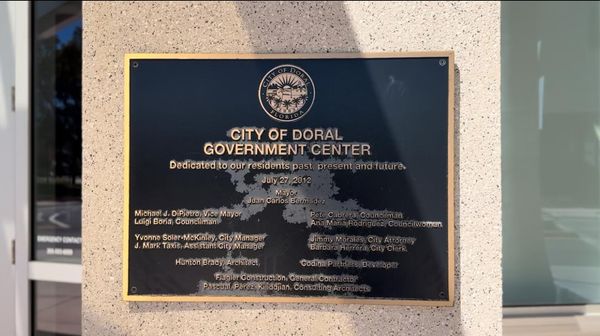
The Reserve Bank has left its interest rate unchanged for a second meeting in a row, stoking the hopes of Australia’s borrowers that the peak of repayment pain has passed.
At its first board meeting of 2024, the board on Tuesday left its cash rate at 4.35%. The decision was anticipated by all 29 economists surveyed by Reuters.
“While recent data indicate that inflation is easing, it remains high,” the RBA said in a statement.
“The board expects that it will be some time yet before inflation is sustainably in the target range,” the statement said. “The path of interest rates that will best ensure that inflation returns to target in a reasonable timeframe will depend upon the data and the evolving assessment of risks, and a further increase in interest rates cannot be ruled out.”
In a subsequent media conference, RBA governor Michele Bullock said the bank’s stance remained “restrictive” and that getting inflation down remained its priority.
“I really understand that the mortgage-holders are sweating on [an early rate cut],” she said. “But the big issue that’s confronting not just mortgage-holders, but everyone, is inflation. And the fact that inflation is so high in so many parts of their lives at the moment is what’s really hurting them.”
Tapas Strickland, NAB’s Head of Market Economics, said there was nothing to signal a rate cut soon from today’s statements, including its updated forecasts report.
“We interpret this as low probability of a cut in H1 2024, but a cut in H2 2024 is consistent with inflation at target by mid-2026 on the RBA’s forecast,” Strickland said.
The gathering was the first to be held over two days in one of a series of changes ushered in by the Albanese government after the first review of the RBA in a generation. Others changes include cutting the number of meetings from 11 a year to eight.
The RBA lifted its interest rate 13 times, or 425 basis points, between May 2022 – just prior to the federal election – and last November. Those increases, the most in three decades, have lifted monthly repayment costs on an average mortgage by almost $1,500, according to RateCity.
Hopes the central bank may soon be shifting to rate cuts have been fanned by weak retail spending at the end of 2023. Inflation also eased more than was expected by the RBA and market economists, dropping to a two-year low in the December quarter.
Before today’s decision, economists at the major banks were not forecasting a lending rate reduction until well into the second half of 2024.
Warwick McKibbin, a former RBA board member and now director of the ANU Centre for Applied Macroeconomic Analysis, said before today’s decision that interest rates probably wouldn’t fall soon, and may even need to increase further.
“There’s enough inflationary risk versus disinflationary risk,” he said. “We don’t yet have inflation under control.”
Big recent wage deals including on the waterfront, which lifted salaries by almost a quarter over four years, could keep costs high in the economy. The escalation of tensions in the Middle East that have already pushed shipping costs higher could yet result in an energy price shock, McKibbin said.
The revised tax cuts and government coffers filled by rising commodities would also add a “demand impulse” into the economy, he said.
The Australian dollar rose after the statement, adding about 0.2 US cents to about 65.1 US cents. Stocks initially extended its falls to close down 0.6% for the day.
Demand in the economy has continued to outstrip its ability to supply goods and services and inflation remains “too high”, according to the bank’s updated statement on monetary policy, also released on Tuesday. Slowing GDP growth, though, is “helping to lessen the imbalance”.
Risks to the domestic outlook are “broadly balanced”. Its forecasts noted market expectations the cash rate would “remain around its current level of 4.35% until mid-2023 before declining to around 3.25% by the middle of 2026”.
The RBA barely changed its forecasts for how soon it expects inflation to drop back to its preferred 2-3% target range, although it did trim its forecast near-term price changes.
It now expects consumer price inflation and its trimmed mean measure – which strips out more volatile movements – to ease to 2.8% by the end of 2025. Its November forecast had those rates at 2.9% by then. The range midpoint would be approached by mid-2026.
“Recent high inflation is consistent with excess demand in the economy and strong domestic cost pressures,” the statement said. “Services inflation remains high despite having passed its peak, while goods inflation has recorded substantial declines.”
However inflation should continue to retreat in the first half of 2024. The RBA now expects the consumer price index to come in at 3.3% and the trimmed mean gauge at 3.6% by this June, compared with 3.9% forecast three months ago for both measures.
The sharper forecast slide in the CPI this year means wages will be firmly positive in real terms by mid-2024. The wage price index will have ended 2023 at 4.1% – in line with inflation – and remain at that level by June.
When bonuses are added in, “real employment income had increased over the past year across all quintiles” of the economy.
Wage growth alone will continue to outpace CPI to at least June 2026, clawing back some of the shortfall in the past two years when inflation outpaced salary growth.
The higher wages, though, are coming with little additional output. “Recent weak productivity outcomes have contributed to very strong growth in unit labour costs, placing upward pressure on inflation,” the RBA said.
Overall, the risks to the domestic outlook are “broadly balanced”, implying the RBA is comfortable with current rate settings. International risks, however, are “tilted to the downside”, particularly if inflation rates don’t retreat as quickly as now expected.
In Australia, rents are among the propellants for inflation and the pace of increases is expected to remain high because of ongoing tightness in the market. Housing prices, meanwhile, increased strongly over 2023 and are now back above the previous peak in April 2022.
While households are saving less than pre-Covid levels, spending is supported by savings socked away during the pandemic. “This suggests there is scope for savings rates to decline further to support consumption,” the report said.
The jobless rate should be marginally higher by June this year, at 4.2%, and then edge higher to 4.4% a year later and remain around that level out to June 2026. The previous peak unemployment rate was 4.3%.
Australia should continue to avoid an economic contraction but the slowdown will be greater than forecast three months ago as consumer spending has lately dimmed more than tipped.
By June, annual GDP growth will ease to just 1.3% compared with a previous predicted 1.8% pace. By year’s end, GDP will be expanding at a 1.8% clip, or slightly less than the November expectation of 2%.
Households and businesses have seen a jump in debt-servicing costs as interest rates have risen, the RBA’s statement noted. However, competition among banks, lags in people coming off fixed-rate loans, and refinancing, meant that the actual increase was 105 basis points less than the 425bp rise in the cash rate since May 2022.
For businesses, borrowing costs have risen about 390bp, or 35bp less than the RBA’s hikes.
Depositors, too, have missed out on some of the rate rises. The average rate paid by banks was also 105bp shy of the RBA’s increases. The RBA noted the competition watchdog, the ACCC, had found in its inquiry concluded in December 2023 “there had been limited pricing competition between banks”.
Australia’s commodity prices continue to be supported by overseas demand, including in China even as that nation’s property sector continues to wilt. The December quarter terms of trade – which compare export to import prices – are expected to have increased as LNG prices rose and the cost of imports retreated.
For the forecasts, crude oil prices were assumed to be broadly unchanged, or 4% below the level expected in the November statement, despite the ongoing tensions in the Middle East.







